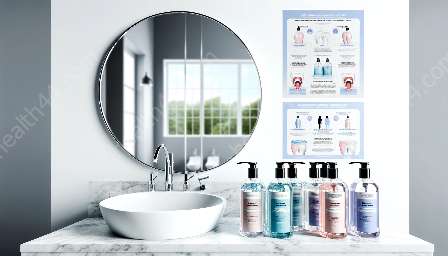Having braces requires special attention to oral hygiene, and including mouthwash in your routine can be beneficial. Here, we'll discuss the best practices for using mouthwash alongside other oral care products when wearing braces, including rinses and their compatibility with braces.
Importance of Oral Hygiene with Braces
Braces create additional nooks and crannies for food particles to hide, making thorough cleaning essential. This is where mouthwash can play a crucial role in reaching areas that may be challenging to access with traditional brushing and flossing alone.
Choosing the Right Mouthwash
When selecting a mouthwash to use with braces, it's important to choose one that is alcohol-free. Alcohol-based mouthwashes can irritate the sensitive tissues in your mouth and may not be suitable for extended use. Look for a mouthwash that is specifically designed for users with braces, as these formulations are often gentler and less likely to damage the braces or irritate the gums.
Using Mouthwash in Your Oral Care Routine
Integrating mouthwash into your daily oral care routine can help to dislodge food particles, reduce plaque, and freshen your breath. Here are some essential steps to consider when using mouthwash alongside other oral care products with braces:
- Step 1: Brush Your Teeth
Start by brushing your teeth with a soft-bristled toothbrush, paying special attention to the areas around the brackets and wires. Thoroughly clean the front, back, and chewing surfaces of your teeth.
- Step 2: Floss or Use an Interdental Brush
Next, floss your teeth using special orthodontic floss threaders, or use an interdental brush to clean between the brackets and wires. This step helps to remove any remaining food particles and plaque.
- Step 3: Rinse with Water
Rinsing your mouth with water can help to dislodge any loose debris and prepare your mouth for the use of mouthwash.
- Step 4: Use Mouthwash
Pour the appropriate amount of mouthwash into a cup, and swish it around your mouth for 30-60 seconds. Take care to avoid swishing aggressively, as this could lead to the dislodging of brackets or wires.
- Step 5: Spit Out the Mouthwash
After swishing, spit out the mouthwash and rinse your mouth thoroughly with water to remove any remaining residue.
- Step 6: Follow with Fluoride Rinse (if recommended)
If your orthodontist has recommended a fluoride rinse, you can use it after using the mouthwash. Fluoride rinses can help to strengthen tooth enamel and prevent cavities, providing additional protection for your teeth during orthodontic treatment.
Compatibility of Mouthwash with Braces
When using mouthwash alongside braces, it's important to ensure that the mouthwash is compatible with your orthodontic appliances. Always follow the manufacturer's instructions and consult with your orthodontist to select the most suitable mouthwash for your specific needs. Additionally, be mindful of any potential interactions between the mouthwash and other oral care products you are using, such as rinses and fluoride treatments.
Conclusion
Using mouthwash alongside other oral care products when wearing braces can significantly contribute to maintaining optimal oral hygiene. By following the best practices and selecting the right mouthwash for your needs, you can effectively enhance your oral care routine and keep your smile healthy throughout your orthodontic treatment.









